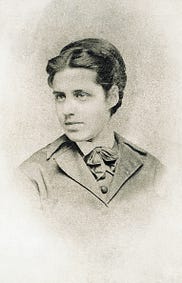|
 |
Jane Kenyon, “Coming Home in Twilight in Late Summer” from Collected Poems. Copyright © 2005 by The Estate of Jane Kenyon. Used by permission of The Permissions Company, Inc. on behalf of Graywolf Press,
ORIGINAL TEXT AND AUDIO - 2017
It was on this day in 1598 that Shakespeare's play The Merchant of Venice was entered on the Stationers' Register. The entry read: "A book of The Merchant of Venice or otherwise called The Jew of Venice." Printers were supposed to enter a work in the Stationers' Register before printing it, but the rule was not enforced, so some works were never entered, and others were entered years after they had been written. In the case of The Merchant of Venice, the printer was probably trying to establish copyright — although copyright laws weren't very well enforced, either.
The Merchant of Venice had probably been written around 1596. By the time the title page of the first quarto was published in 1600, there was a note saying: "It hath beene divers times acted by the Lord Chamberlaine his servants." But there is no official record of a performance of The Merchant of Venice until 1605, when it was performed by the King's Men for the court of King James I. James was such a fan that he asked for another performance a week later.
One of the main characters in The Merchant of Venice is a villainous Jew named Shylock. In 1594, the queen's personal physician — a Portuguese Jew named Roderigo López — was charged with high treason and executed. Around the same time, Shakespeare's biggest rival, Christopher Marlowe, wrote The Jew of Malta, a wildly popular play featuring an evil Jewish protagonist. Shakespeare followed suit with Shylock. He was played with a red wig, red beard, and huge fake nose, and dressed in a big robe.
Shakespeare coined plenty of words, or changed their usage, and came up with many new phrases; The Merchant of Venice gives us the words laughable, scrubbed, and compromise, and the phrases bated breath, love is blind, and all that glitters is not gold.
It's the birthday of the man who said: "All I ever wanted to do was to paint sunlight on the side of a house." That's painter Edward Hopper, born in Nyack, New York (1882). By the time he was 12, he was already six feet tall. He was skinny, gangly, made fun of by his classmates, painfully shy, and spent much of his time alone drawing.
After he finished art school, he took a trip to Paris and spent almost all of his time there alone, reading or painting. In Paris, he realized that he had fallen in love with light. He said the light in Paris was unlike anything he'd ever seen before. He tried to re-create it in his paintings.
He came back to New York and was employed as an illustrator at an ad agency, which he hated. In his spare time, he drove around and painted train stations and gas stations and corner saloons.
Hopper had only sold one painting by the time he was 40 years old, but his first major exhibition — in 1933 at the Museum of Modern Art — made his reputation. His pieces in that show had titles like Houses by the Railroad, Manhattan Bridge Loop, Room in Brooklyn, Roofs of Washington Square, Cold Storage Plant, Lonely House, and Girl on Bridge.
It's the birthday of Emma Lazarus, born in New York City (1849). She came from a wealthy Jewish family, and her father paid to have her first collection of poems published when she was 17. Her early work impressed Ralph Waldo Emerson, and they corresponded for many years. In the 1880s, she was horrified to hear of violent anti-Semitic attacks in Russia and Germany, and her work took on a new Zionist focus. She became concerned with the plight of the poor and the refugee, and organized relief efforts for immigrant Jewish families. The Statue of Liberty committee approached her in 1883 and asked her to write a poem that they could auction off to raise money for the monument. She responded with "The New Colossus," which includes the famous lines, "Give me your tired, your poor, / Your huddled masses yearning to breathe free."
On this day in 1587, English settlers arrived on Roanoke Island, off the coast of what is now North Carolina. This was the third foray by the English to the New World; Sir Walter Raleigh, with the backing of Queen Elizabeth I, had commissioned an exploratory expedition to scout out the land for the crown. The second expedition formed a military settlement, which was eventually abandoned when the men ran out of supplies. But this third group was the first to include women and children, and was intended to be a permanent settlement. Governor John White's plan was to build up a self-sustaining economy, and to find a way to co-exist peacefully with the Native Americans. Things were going well enough for White to sail back to England four months later. Although it was supposed to be a brief trip, he was unable to find a ship to return to the colony. England was at war with Spain, and every seaworthy ship was claimed by the Crown to fight the Spanish Armada. White didn't return to Roanoke Island for nearly three years; when he did, he found the settlement deserted, and all the buildings taken down. The only clues to the colonists' fate were the letters CRO carved into a tree, and the word CROATOAN carved into a fence post. It is still not known for sure what caused the settlers to leave Roanoke, but there were no signs of sickness or violence.
Be well, do good work, and keep in touch.®
COLLECTED POEMS BY JANE KENYON - CLICK HERE
You’re a free subscriber to The Writer's Almanac with Garrison Keillor. Your financial support is used to maintain these newsletters, websites, and archive. Support can be made through our garrisonkeillor.com store, by check to Prairie Home Productions P.O. Box 2090, Minneapolis, MN 55402, or by clicking the SUBSCRIBE button. This financial support is not tax deductible.


